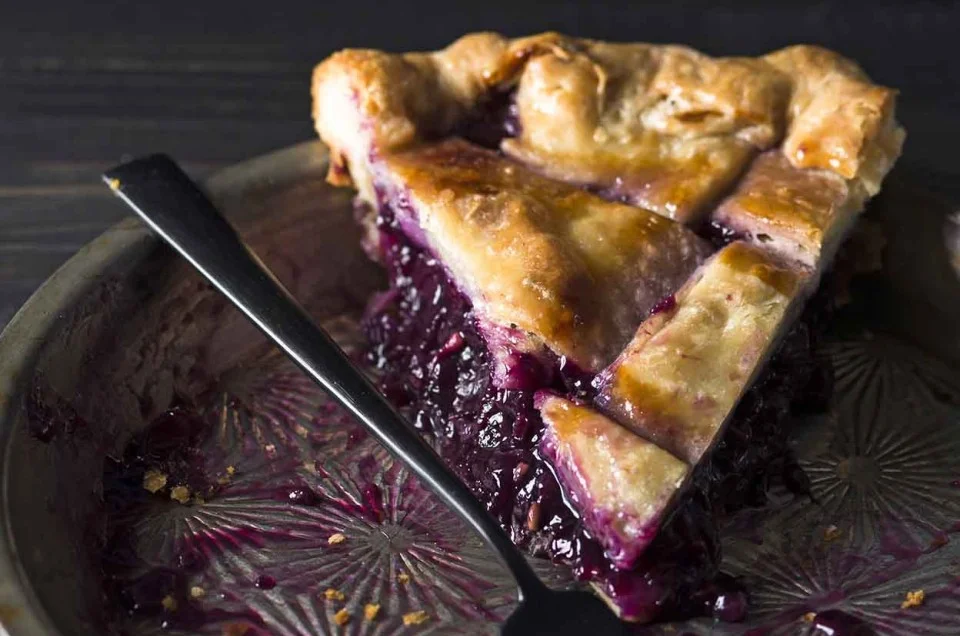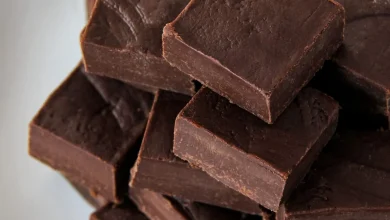Introduction
Hailing from the picturesque town of Naples, New York, nestled at the southern tip of Canandaigua Lake, the Naples Grape Pie is a culinary treasure that embodies the region’s rich agricultural heritage and local flavor. Celebrated for its unique blend of sweet, tart, and aromatic qualities, this pie has become a symbol of Finger Lakes’ vibrant produce culture. Crafted with fresh concord grapes—known for their deep purple hue and luscious taste—this recipe captures the essence of late summer and early fall harvests. Irene Bouchard, often revered as the mother of Naples’ grape pies, popularized this delightful dessert, elevating it from a local specialty to a nationally recognized delicacy, thanks in part to its feature on the Food Network’s “Food Finds.” Whether you are a seasoned baker or a curious home cook, this comprehensive guide will walk you through every nuance of making an authentic Naples Grape Pie, ensuring a perfect balance of flavors, texture, and visual appeal. Prepare to indulge in a slice of Finger Lakes history with each bite of this lovingly crafted dessert, shared here exclusively for Love With Recipes!
Time
The total time required to prepare this exquisite pie is approximately 10 hours and 15 minutes, including all preparation, sitting, and baking phases. The actual hands-on time is around 45 minutes, but the sitting period—where the mixture infuses and develops its beautiful color—makes up the majority of the process. This resting step is crucial for achieving the signature vivid hue and depth of flavor that define the Naples Grape Pie.
Needed Equipment
- Heavy-bottomed saucepan: essential for cooking the grape pulp evenly and preventing scorching.
- Colander or fine mesh strainer: for removing seeds from the cooked pulp.
- Food mill (optional but recommended): provides a smoother pulp without seeds, but a fine sieve can suffice.
- Mixing bowls: for combining ingredients and soaking the grape skins.
- Wooden spoon or silicone spatula: for stirring the grape mixture and incorporating ingredients.
- Rolling pin: to roll out the pie crust and floating top crust.
- Pie dish (9-inch): a standard deep-dish pie pan to hold the filling comfortably.
- Measuring cups and spoons: for accurate ingredient measurement.
- Pastry brush: for applying egg wash or butter (if used in enhancements).
- Oven thermometer (optional but recommended): to ensure precise baking temperatures.
- Aluminum foil or pie crust shield: to prevent over-browning of the crust during baking.
- Cooling rack: for cooling the pie after baking.
Tags
dessert, fruit pie, finger lakes cuisine, grape recipes, traditional American pie, seasonal baking, homemade pie, finger lakes specialty, family dessert, summer fruit, easy baking, nostalgic recipes
Serving Size
This recipe yields one 9-inch pie, which typically provides about 8 generous slices. Serving sizes can be adjusted based on appetite and presentation preferences, but standard servings are approximately 1 slice per person.
Difficulty Level
This recipe is rated as moderate in difficulty. It involves multiple steps, including preparing the grape pulp, managing the resting period, and precise baking. However, with careful attention to detail and patience, even novice bakers can successfully craft an authentic Naples Grape Pie.
Allergen Information
- Contains gluten (pie crust, unless using gluten-free crust)
- Contains sulfites (concord grapes naturally contain sulfites)
- Contains dairy (butter used in the recipe)
- Possible cross-contamination depending on ingredients and equipment used
Dietary Preference
This recipe is not suitable for vegan or dairy-free diets unless modifications are made (such as replacing butter with plant-based alternatives). It is naturally vegetarian but contains gluten and dairy.
Course
Dessert, sweet course, pastry course
Cuisine
American, Finger Lakes regional cuisine, traditional baking
Ingredients
Grape Preparation and Filling
| Ingredient | Quantity | Notes |
|---|---|---|
| Concord grapes | 5 1/2 cups | Fresh, ripe, and in-season grapes are ideal for flavor and color |
| Sugar | 1 cup | Adjust sweetness based on grape ripeness and personal taste |
| Tapioca | 1 tablespoon | Natural thickener; substitute with cornstarch or arrowroot powder if needed |
| Butter | A small dollop | For dotting over the filling to add richness |
Pie Crust
| Ingredient | Quantity | Notes |
|---|---|---|
| Prepared pie crust (store-bought or homemade) | One 9-inch crust | If making from scratch, use a flaky pastry dough recipe |
Instructions
Step 1: Preparing the Grapes
Begin by selecting fresh, ripe concord grapes. Rinse them gently under cool water to remove any dirt or debris. Once cleaned, take each grape and gently pinch at the end opposite the stem to pop the skins. This technique makes it easier to remove the skins without crushing the pulp prematurely. Collect the skins in a separate bowl and set aside. This step is crucial for the authentic look and flavor of the pie, as the skins provide the signature purple hue and a slight tartness that complements the sweet pulp.
Step 2: Cooking the Grape Pulp
Transfer the peeled grapes to a heavy-bottomed saucepan. It is essential to use a pan with a sturdy base to prevent scorching and ensure even heat distribution. Turn the heat to medium and bring the grapes to a gentle boil. As the grapes heat, they will begin to soften and release their juices. Allow them to simmer for approximately 5 to 6 minutes, stirring occasionally with a wooden spoon or silicone spatula to prevent sticking. During this phase, the grapes break down, and their natural sugars are released, creating a fragrant, sweet mixture.
Step 3: Removing Seeds and Achieving a Smooth Pulp
Once cooked, remove the pan from heat. Pour the hot grape mixture through a colander or fine mesh strainer placed over a large bowl. Using a food mill fitted with a fine plate is highly recommended for efficient seed removal and achieving a smooth pulp. If a food mill isn’t available, pressing the mixture through a fine sieve or using a potato masher can work, but the result may be slightly chunkier. The goal is to extract a seedless, smooth, and glossy purple pulp that will serve as the filling’s base.
Step 4: Infusing the Pulp with the Skins
Carefully pour the hot, seedless pulp over the reserved grape skins in a clean bowl. Gently mix to combine, then cover and let sit at room temperature for about 5 hours. During this sitting period, the mixture develops a vibrant color, deepening its purple hue—a signature characteristic of authentic Naples Grape Pie. Irene Bouchard emphasizes this step as critical for achieving the visual appeal and flavor depth that distinguishes this pie from other fruit desserts. The resting time also allows the flavors to meld and the pulp to thicken slightly, setting the stage for the final assembly.
Step 5: Sweetening and Thickening
After the resting period, transfer the grape mixture to a mixing bowl if not already in one. Stir in the sugar, ensuring it dissolves completely into the pulp. Add the tablespoon of tapioca, which acts as a natural thickener. Incorporate the tapioca gradually, stirring continuously to prevent clumping. This step is vital for the structural integrity of the pie, preventing it from becoming overly runny during baking. The mixture should be glossy and slightly viscous but not gelatinous—aim for a consistency that will hold its shape when poured into the crust.
Step 6: Assembling the Pie
Preheat your oven to 400°F (205°C). Roll out your prepared pie crust on a lightly floured surface to fit a 9-inch pie dish. Carefully transfer the crust to the pie pan, gently pressing it into the edges. Pour the grape filling into the prepared crust, spreading it evenly with a spatula. Dot small pieces of butter over the filling—this adds richness and enhances the flavor profile. For the top crust, Irene Bouchard’s “floating” technique involves rolling out a circle of dough slightly smaller than the pie’s top diameter. Gently place this circle over the filling, allowing it to rest lightly on top without sealing the edges tightly. This method produces an attractive purple ring around the edge and simplifies the baking process.
Step 7: Baking
Place the assembled pie on the middle rack of the preheated oven. Bake at 400°F (205°C) for 15 minutes. This initial high temperature sets the crust and starts to firm up the filling. After 15 minutes, reduce the oven temperature to 350°F (177°C) and continue baking for an additional 20 minutes. During this period, the crust turns a beautiful golden brown, and the grape filling begins to bubble and thicken. Keep an eye on the pie during the last few minutes to prevent over-browning; if necessary, shield the edges with aluminum foil or a pie crust shield. The pie is done when the crust is crisp, and the filling is bubbling around the edges.
Step 8: Cooling and Serving
Remove the pie from the oven and allow it to cool on a wire rack for at least 30 minutes. Cooling helps the filling set and makes slicing easier. Serve the Naples Grape Pie slightly warm or at room temperature, accompanied by a dollop of whipped cream or a scoop of vanilla ice cream for an indulgent experience. The balance of sweet, tart, and aromatic flavors makes this pie a memorable conclusion to any meal or a delightful centerpiece for special gatherings.
Preparation Tips
- Freshness is key: Use ripe, in-season concord grapes for the best flavor and vibrant color.
- Seed removal: Be meticulous in removing all seeds to ensure a smooth filling and prevent bitterness.
- Infusion step: Don’t skip the resting period after combining pulp and skins; it’s crucial for color and flavor development.
- Thickening agents: Tapioca provides a natural thickening; adjust the quantity if you prefer a firmer or looser filling.
- Floating crust: Using a slightly smaller circle of dough for the top creates an elegant look and easier assembly.
- Baking times: Keep a close eye during the last 10 minutes to prevent over-baking; ovens vary in heat performance.
Nutritional Information
| Nutrient | Per Serving (1 slice of 8) |
|---|---|
| Calories | approximately 250 kcal |
| Total Fat | 10 g |
| Saturated Fat | 5 g |
| Cholesterol | 0 mg |
| Sodium | 75 mg |
| Total Carbohydrates | 40 g |
| Dietary Fiber | 2 g |
| Sugars | 25 g |
| Protein | 2 g |
Tips and Tricks
- Color enhancement: Soaking the grape skins in the pulp not only boosts flavor but also intensifies the pie’s purple hue. For a deeper color, extend the sitting time by an hour or two, if desired.
- Alternative thickening: Arrowroot powder is an excellent gluten-free alternative to tapioca. Use in the same quantity, but add it at the same stage as the tapioca.
- Presentation: For a rustic look, skip the floating crust and crimp the top edges for a traditional appearance.
- Serving temperature: The pie is best served slightly warm or at room temperature; refrigerate leftovers and gently reheat for optimal texture.
- Flavor variations: A dash of cinnamon or lemon zest can add a subtle complexity to the filling, though traditionalists prefer the pure grape flavor.
Add-ons
- Whipped cream or mascarpone cheese for serving
- A drizzle of honey or lavender syrup for extra aroma
- Fresh mint leaves as a garnish
- Chopped toasted nuts (walnuts, pecans) sprinkled on top for added crunch
Side Dishes
- Vanilla bean ice cream
- Fresh fruit salad
- Herbal tea or coffee to complement the sweetness
- Light sorbets for a refreshing contrast
Improvements
- Experiment with different grape varieties such as Niágara or Concord seedless for varied flavor profiles.
- Enhance the visual appeal by adding a lattice crust or decorative cut-outs on the floating crust.
- Incorporate a splash of lemon juice or zest to brighten the flavor.
- Try a gluten-free crust using almond flour or gluten-free baking mixes for dietary restrictions.
Save and Store
Allow the pie to cool completely before storing. Wrap tightly with plastic wrap or place in an airtight container. The Naples Grape Pie can be refrigerated for up to 2 days for optimal freshness. For longer storage, freeze slices individually wrapped in plastic and foil; reheat gently in the oven or microwave before serving.
FAQ
Can I use frozen grapes?
Fresh grapes yield the best flavor and texture, but frozen concord grapes can be used if fresh are unavailable. Thaw thoroughly and drain excess moisture before proceeding.
Can I make this pie vegetarian or vegan?
To make the pie vegan, substitute the butter with a plant-based margarine or coconut oil and use a vegan pie crust. Keep in mind that the natural sulfites in grapes may still be present.
Is this pie suitable for gluten-free diets?
Yes, if you use a gluten-free crust and gluten-free thickening agents like arrowroot or cornstarch, the pie can be adapted for gluten-free eating.
How can I intensify the grape flavor?
In addition to soaking the skins, consider adding a splash of grape juice or a hint of grape extract to amplify the flavor profile.
Conclusion
The Naples Grape Pie stands as a testament to the Finger Lakes’ regional bounty—a harmonious blend of fresh, local grapes and traditional baking techniques. Its vivid color and complex flavor profile make it a standout dessert worthy of celebration. Whether served at family gatherings, seasonal festivals, or as a personal indulgence, this pie offers an authentic taste of Naples’ culinary heritage. Remember, patience during the resting phase and attention to the intricate steps will reward you with a pie that not only delights the palate but also leaves a lasting impression. Share this gem from Love With Recipes with friends and family, and enjoy the rich history and vibrant flavors of this beloved Finger Lakes specialty!
References
- Finger Lakes Foodways: A Culinary History of the Finger Lakes Region, 2010.
- Official Naples, NY, tourism and culinary heritage resources.



